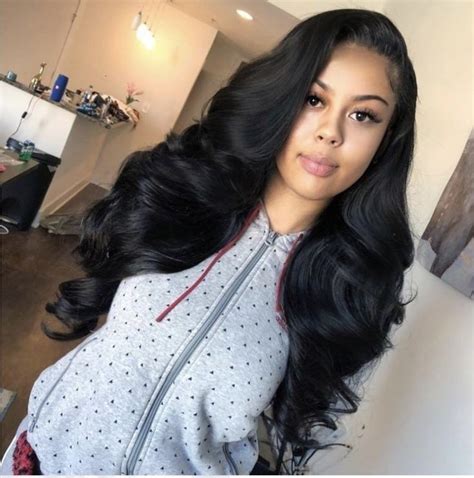Hair Sew Ins: The Ultimate Guide to Enhancing Your Look

Hair sew ins are a semi-permanent hair extension method that involves attaching human or synthetic hair extensions to your natural hair using a needle and thread. This technique creates a natural-looking, voluminous hairstyle that can last for several months with proper care.
Types of Hair Sew Ins
There are three main types of hair sew ins:
- Machine Sew Ins: This method uses a sewing machine to attach the hair extensions to the natural hair.
- Hand Sew Ins: A stylist manually sews the hair extensions to the natural hair using a needle and thread.
- Micro Sew Ins: Tiny wefts of hair are attached to the natural hair using a micro-linking tool, resulting in a less visible and lighter feel.
Benefits of Hair Sew Ins
- Volume and Length: Hair sew ins instantly add volume and length to your natural hair, creating a fuller, more dramatic look.
- Versatility: Sew ins can be styled in various ways, from sleek and straight to voluminous and curly, giving you endless options for your hair.
- Protection: Sew ins can protect your natural hair from heat damage, chemical treatments, and excessive styling.
- Low Maintenance: Sew ins require less daily styling than other hair extensions such as clip-ins or tape-ins.
- Long-Lasting: With proper care, hair sew ins can last for several months, providing you with a long-term solution for enhancing your hairstyle.
Drawbacks of Hair Sew Ins
- Cost: Hair sew ins can be more expensive than other hair extension methods, especially if you use human hair extensions.
- Time-Consuming: The installation process can take several hours, depending on the type of sew in used.
- Potential for Damage: Improper installation or removal of hair sew ins can damage your natural hair, leading to breakage or thinning.
- Scalp Tension: Sew ins can create tension on the scalp, especially if they are installed too tightly.
- Regular Maintenance: Sew ins require regular maintenance, such as tightening and conditioning, to keep them looking their best.
Who are Hair Sew Ins Suitable For?
Hair sew ins are a versatile hair extension method suitable for various hair types and textures. They are particularly beneficial for those who:
- Desire thicker, fuller hair
- Want to add length to their natural hair
- Seek a long-lasting hair extension solution
- Have damaged or thin hair that needs protection
Choosing the Right Hair Sew In for You
When choosing a hair sew in, consider the following factors:
- Natural Hair Type: Consult with a stylist to determine which type of sew in is best for your hair texture and density.
- Desired Length and Volume: Decide how much length and volume you want to add to your hair.
- Hair Extension Type: Choose between human hair extensions (more natural but more expensive) or synthetic hair extensions (less expensive but less natural).
- Budget: Determine how much you are willing to spend on hair sew ins, including the installation and maintenance costs.
Hair Sew In Installation Process
The hair sew in installation process involves:
- Preparation: The stylist will wash, condition, and prepare your natural hair for the extensions.
- Parting: The stylist will part your hair into sections to create tracks for the extensions.
- Sewing: The stylist will use a needle and thread to attach the hair extensions to the tracks created in your natural hair.
- Adjustment: Once the extensions are attached, the stylist will adjust the tension and trim the hair to blend seamlessly with your natural hair.
Hair Sew In Maintenance
To maintain your hair sew ins, follow these tips:
- Wash your hair gently: Use a sulfate-free shampoo and conditioner and avoid rubbing the hair extensions too vigorously.
- Condition regularly: Apply a deep conditioning treatment to the hair extensions every few weeks to keep them hydrated and prevent tangling.
- Detangle carefully: Use a wide-tooth comb to gently detangle the hair extensions, starting from the ends and working your way up.
- Avoid heat styling: Limit the use of heat tools on the hair extensions, as excessive heat can damage them.
- Get regular tightening: Have your hair sew ins tightened every 4-6 weeks to prevent them from becoming loose or slipping.
How Long Do Hair Sew Ins Last?
The lifespan of hair sew ins depends on the type of extensions used, the installation technique, and the maintenance routine.
- Human Hair Sew Ins: Human hair sew ins can last for up to 6 months with proper care.
- Synthetic Hair Sew Ins: Synthetic hair sew ins typically last for 2-3 months.
Removing Hair Sew Ins
When it’s time to remove your hair sew ins, consult with a professional hairstylist. Improper removal can damage your natural hair.
Conclusion
Hair sew ins are a versatile and effective hair extension method that can enhance your hairstyle and give you the volume, length, and protection you desire. By choosing the right type of sew in and following proper maintenance techniques, you can enjoy your sew ins for several months while keeping your natural hair healthy and protected.
